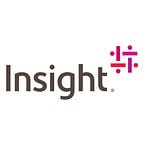Revolutionize Your Hybrid Cloud Strategy with Consumption-Based HCaaS
If your company is looking to manage workloads both on premises and in the cloud, a hybrid cloud solution may be perfect. Hybrid cloud combines the convenience of cloud computing with the control of on-premises infrastructure. However, many organizations don’t know how modernizing their on-prem environment to match the agility of the public cloud can benefit them.
Insight’s Hybrid Cloud as a Service (HCaaS) unlocks the full potential of on-premises/cloud environments. It yields a seamless and flexible hybrid cloud infrastructure, integrating security and scalability across all workload locations. Companies get a predictable pay-as-you-go model, paying only for what they use as HCaaS activates the flexibility and agility they need to compete in today’s fast-paced digital landscape.
Why a hybrid cloud approach?
In today’s digital landscape, a cloud-only approach may not be the best fit. Many leaders see it’s important to keep certain workloads on prem. By leveraging on-premises solutions, they mitigate costs, manage intellectual property and ensure security and compliance across their environment.
There also are advantages to keeping workloads cloud-native: seamless scalability, low overhead costs and unparalleled flexibility. However, a successful infrastructure strategy calls for balance.
A hybrid cloud environment acts as a bridge between on-prem and cloud environments to integrate private and public clouds with data-stored environments. The result is greater flexibility, increased storage agility and enhanced data scalability.
Organizations can leverage a hybrid cloud environment optimized for their unique requirements, incentivizing a growing number to take that approach and advantage of the best of both worlds: the agility and scalability of the cloud and the control/security of on-premises infrastructure, without having to shoulder the risks of either.
Hybrid cloud has its limits.
The cloud offers a modern platform with greater agility and lower operational costs. However, organizations still face limitations when it comes to achieving cloud-like flexibility in their on-prem workload environments.
Extending cloud-like flexibility to on-prem workloads can benefit organizations facing several issues, like:
Increasing costs
- Traditionally, organizations had to purchase bulk capacity up front, leading to large multimillion-dollar capital purchases that depreciate over three to five years.
- Organizations are now turning to cloud-like pay-as-you-go pricing models for more of a flexible, cost-effective approach to managing workloads.
Having to adapt faster
- Applications are going live faster than ever as data generates at never-before-seen paces.
- As a result, it’s increasingly difficult to plan for the long term, requiring a more agile, cloud-like consumption model. Companies can scale up and down as needed, adapting to the fluctuating business landscape.
Unlocking the benefits of cloudlike on-premises infrastructure
- In a traditional capital-expenditure world, organizations must manage the entire hardware lifecycle. In a public cloud environment, they no longer deal with the burden of maintaining infrastructure, as patches and updates occur behind the scenes.
- The hybrid-cloud, as-a-service model decouples the hardware-management aspect from the consumption of a service as they run applications.
To remain competitive, organizations need agility and scalability across the board, not just in the cloud. Modernizing an on-premises consumption model, they use on-prem workloads alongside cloud resources to benefit from all the cloud’s advantages.
Organizations minimize costs while maximizing performance, like this fast-growing city that modernized its infrastructure to drive return-on-investment growth, through an as-a-service consumption model via Insight. Their outcomes included pay-as-you-go flexibility, rapid scaling on demand and scalability for its hybrid cloud initiatives moving forward.
The full potential of hybrid cloud
HCaaS is a critical component of an overall cloud strategy. Workloads reside in the optimal location at the right time. By complementing public cloud initiatives with a hosted/on-prem cloud option, organizations give themselves more options. Leveraging a hybrid-cloud approach with an as-a-service consumption model extends data centers into the cloud with greater control and visibility.
Key HCaaS advantages at a glance:
- Faster time to market for quicker responses to changing market demands
- Streamlined operational efficiency for lower costs and greater productivity
- Greater ability to innovate to drive growth — and stay ahead of the curve
HCaaS is poised to modernize on-prem infrastructure. Thanks to a consumption-based model, it replaces large, long-term capacity purchases. Companies are already applying it to existing workloads in the cloud to become more agile and scale as necessary to meet their evolving needs.
Insight for HCaaS
Hybrid cloud combines the best of on-premises and cloud environments, integrating them into a simple and practical consumption-based model.
Insight HCaaS empowers organizations to take a hands-off approach to hybrid-cloud consumption through the Solutions Integrator’s wealth of expertise in business, technology, workloads and as-a-service.
By partnering with Insight, companies can use HCaaS to exceed business outcomes by becoming more flexible, scalable and efficient.
For more information on how to get started with hybrid cloud services, delivered by Insight, visit insight.com or call 1.800.INSIGHT.
